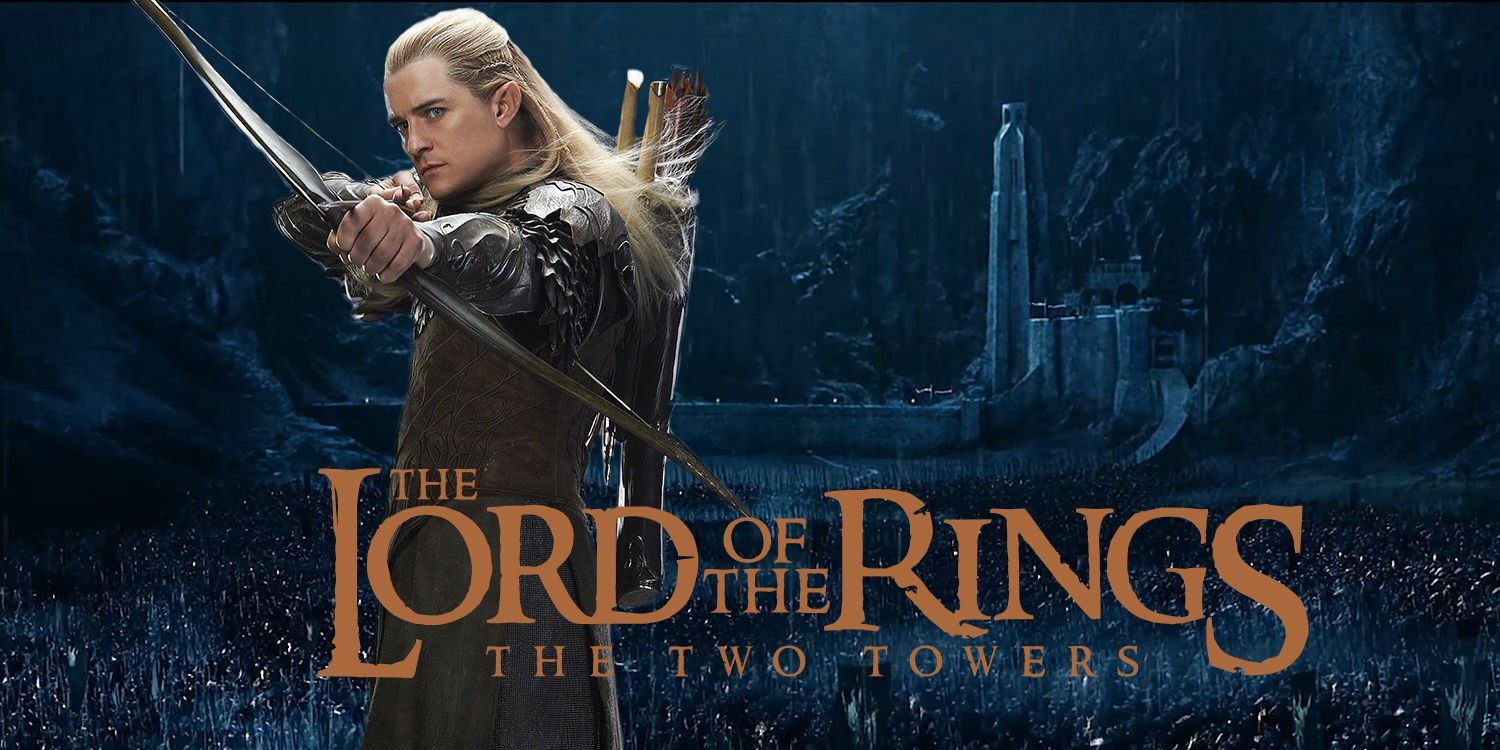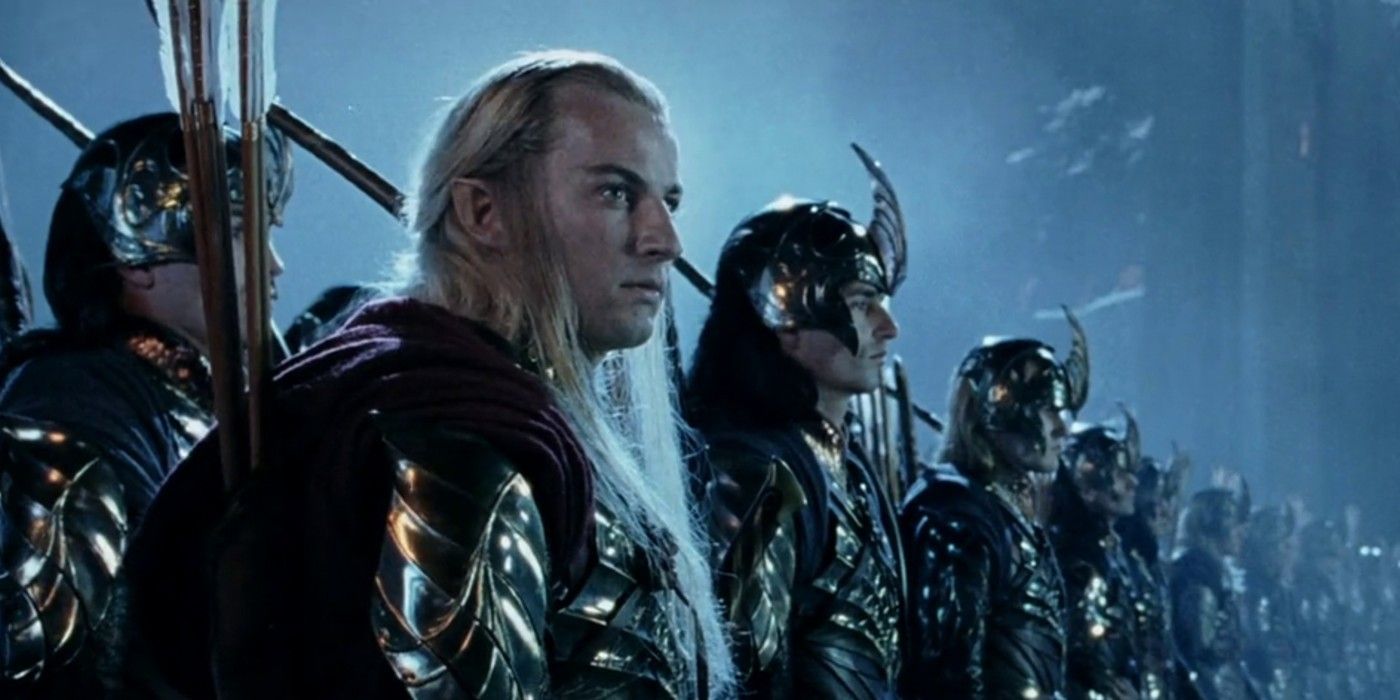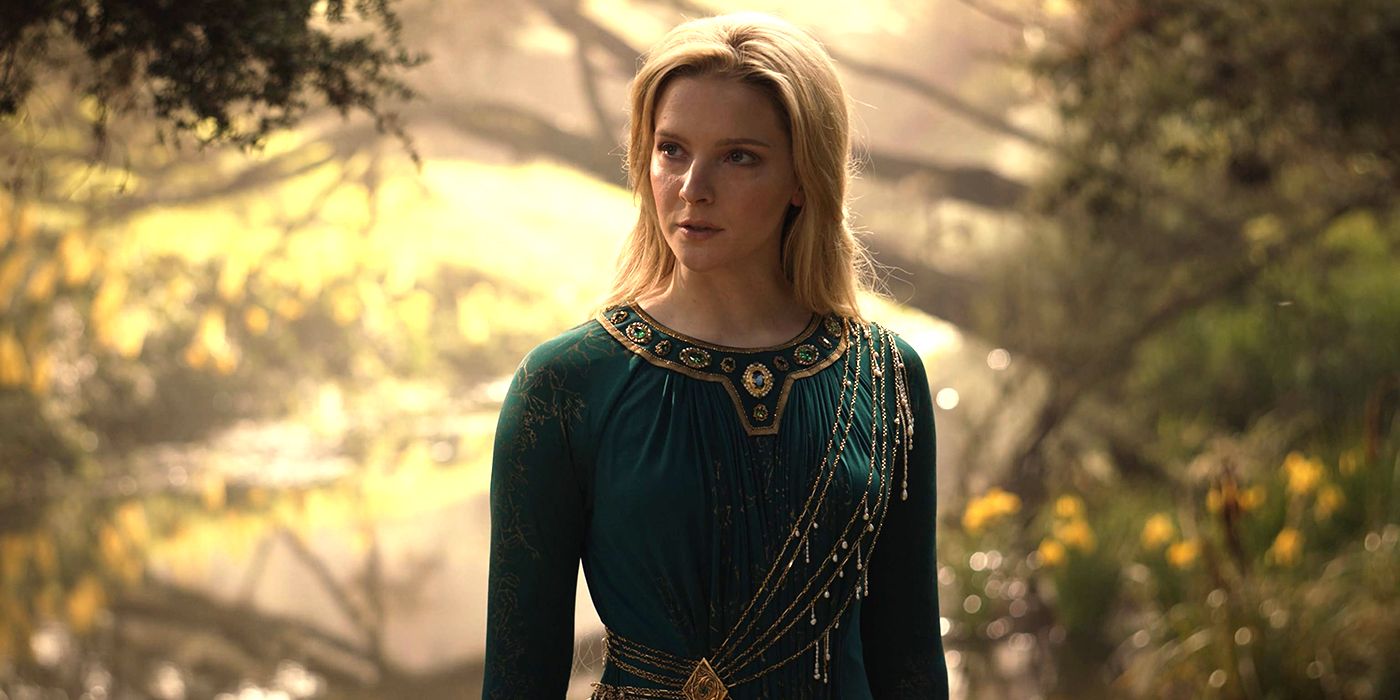In one of the most memorable moments from Peter Jackson's The Lord of the Rings: The Two Towers, an army of elves arrives to support their human counterparts in the battle against Saruman at the Battle of Helm's Deep, but things played out very differently in Tolkien's book. In the original The Lord of the Rings story, the victory is won by men alone. As in the feature film interpretation, Aragorn and Rohan's King Théoden evacuate their people to the gorge of Helm's Deep and are besieged by wave after wave of Lord of the Rings' Uruk-hai warriors. The forces of men hold out on their own, largely relying on their structural defenses and the horse-riding skills of the Rohirrim to barely avoid being wiped out after the fall of the Hornburg stronghold. As in the movie, it's Gandalf who makes the late save - but with reinforcements from the Westfold rather than Eómer and Lothlórien's elves - and the battle is won without a pointy ear in sight, Legolas excluded.
Peter Jackson's reasoning for adding the elves to the climactic Battle of Helm's Deep is addressed on the commentary track for The Lord of the Rings: The Two Towers. In the books, it isn't just Rohan under assault from the titular two towers of Orthanc and Barad-dûr, but Lothlórien and many other lands populated by the elvish and dwarf folk. Just as Morgoth's corrupting influence threatened every kingdom in Middle-earth in Rings of Power, so did Sauron's forces do the same in Lord of the Rings. Tolkien writes of various battles kicking off all over Middle-earth as Sauron attempts to assert his dominance over the land, but the focus settles upon Helm's Deep because that's the clash Gandalf and the other Fellowship members have become embroiled in.
Jackson Added Elves Because Saruman Was A Threat To All Of Middle-earth
In a more succinct (relatively speaking) big-screen adaptation, it's far more difficult to establish to the audience that many battles are taking place simultaneously. To ensure that The Two Towers got across the message that Saruman was a threat to all the peoples of Middle-earth and not just its men, the decision was made by Jackson and others to incorporate the elves into the Battle of Helm's Deep rather than have them scrapping off-screen in a different location.
Many of Jackson's alterations to Tolkien's source material have been criticized by fans, with large sections of the books, such as Tom Bombadil or The Scouring of the Shire, making way for the sake of a manageable run time. Book purists largely deem Jackson's changes unnecessary or disruptive to the plot. Indeed, it could be argued that the union of elves and men in The Two Towers makes their absence in The Return of King's Battle of the Pelennor Fields somewhat strange. If the elves stopped by to help out at the Battle of Helm's Deep, why would they later skip out on an even more vital battle upon which the future of Middle-earth was directly linked? In the books, this is, once again, because they have their own attacks to repel and because Helm's Deep was nearer than Minas Tirith, but the reasoning isn't explicit on-screen, especially after the alliance made previously. Moreover, Lord of the Rings' elves typically look down on other races, so why would they help men when they have their own fights against Sauron?
Despite these lingering questions, adding the elves to the Battle of Helm's Deep ultimately pays dividends. Not only does the climax of The Two Towers feel all the more epic for featuring multiple races facing off against an overbearing evil, but the elves' presence also achieves Jackson's aim of making the troubles of Middle-earth feel universal. This would've been difficult to convey had the elves remained off-screen for every key battle in the Lord of the Rings trilogy.
Elves Are Very Different On Screen In Every Adaptation
Tolkien's Lord of the Rings has inspired various adaptations, and each comes with their own unique version of elves. From Legolas showing up in the Hobbit to almost everything elf-related in The Rings Of Power, elves have been portrayed very differently onscreen compared to Tolkien's original texts. Rings of Power's Galadriel Morfydd Clarke in particular is quite different from Cate Blanchett's depiction in Lord of the Rings, but actually closer to how Tolkien originally envisioned the character. Comparatively fewer changes have been made to other races, like the hobbits, who are more-or-less book-accurate for the most part, Rings of Power's hobbits/harfoots notwithstanding. This might be due to cultural tastes at Tolkien's time of writing being different from those in the 21st century.
The aloof and passive elves of the Lord of the Rings books might have seemed mysterious and endearing to Tolkien's contemporary readers, but to modern audiences, they would probably just come off as incredibly unlikable. Since the elves actually side with the people of Middle-earth, despite their arrogant attitude, it makes a lot more sense to humanize them a bit and have them be more involved. Indeed, the book changes in Rings of Power and other Tolkien adaptations, whether in terms of elves or other races, are generally done to make the source material more palatable for contemporary audiences.



